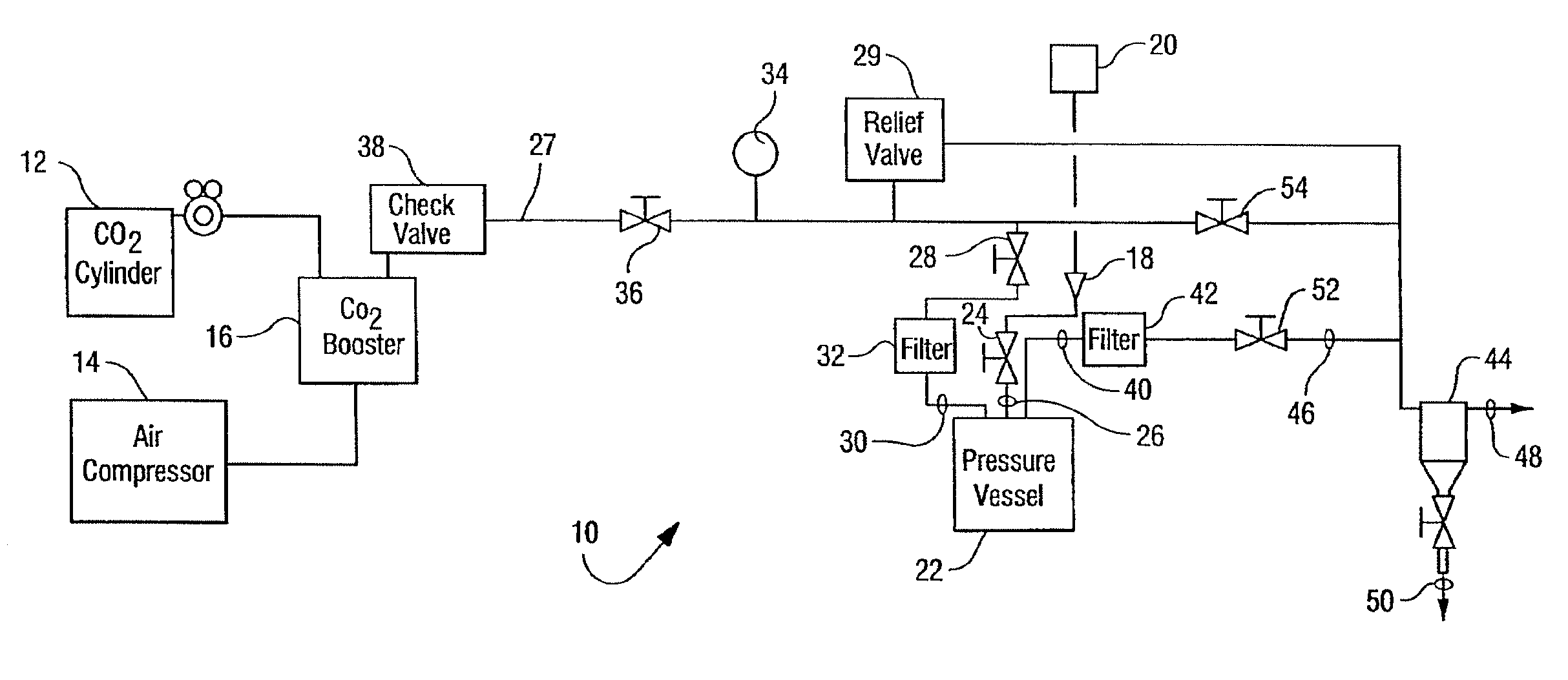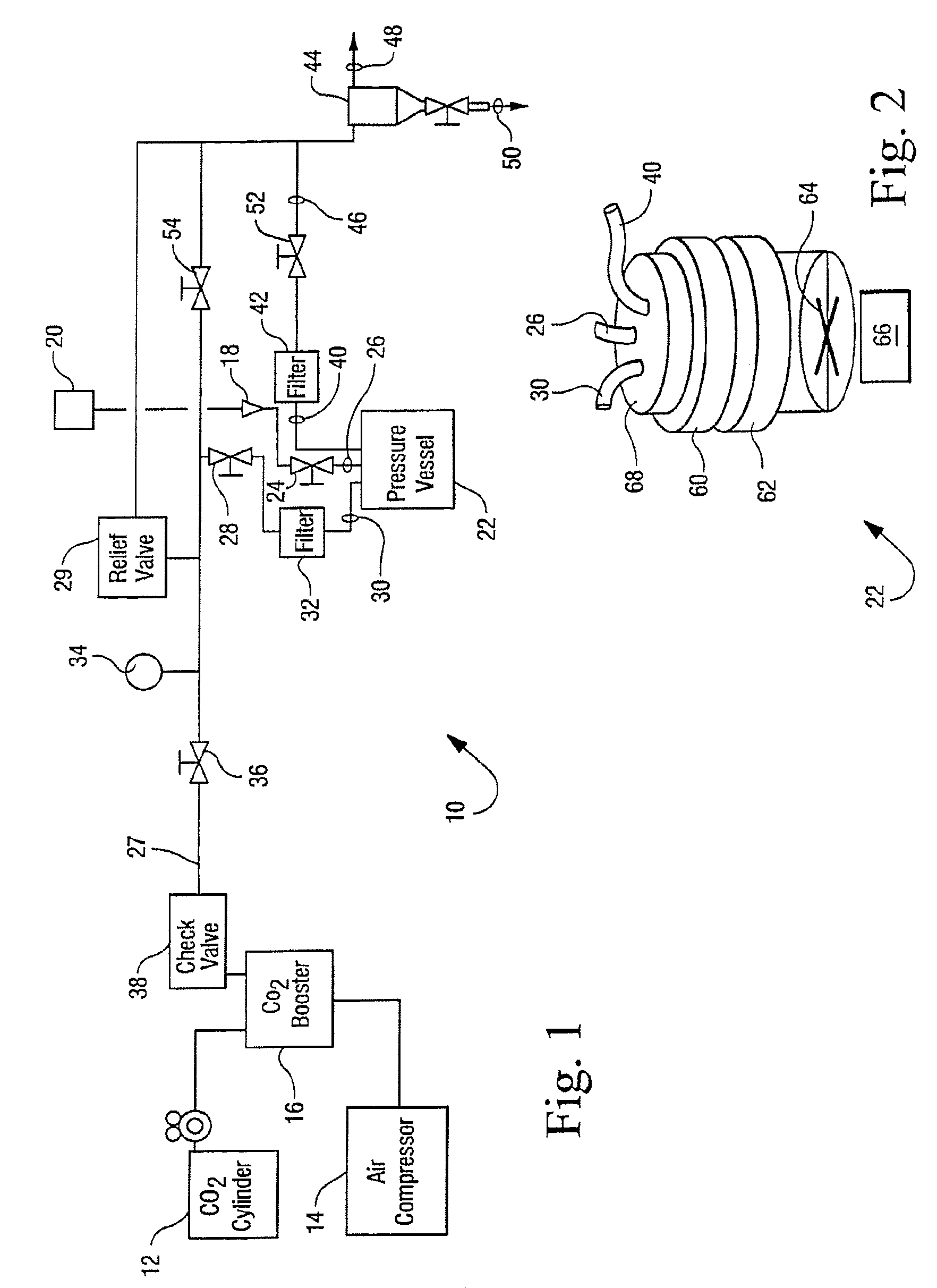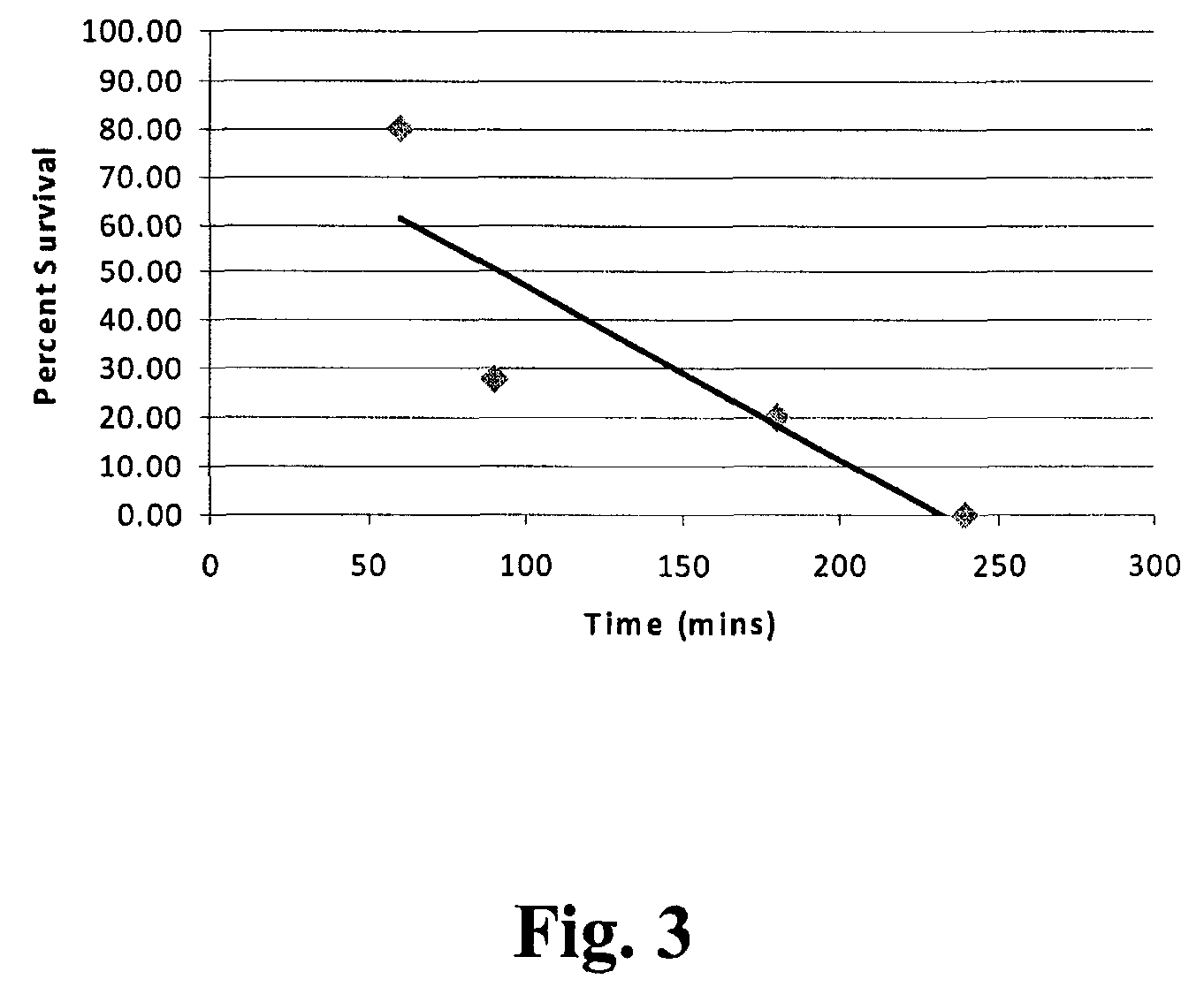Combined use of an alkaline earth metal compound and a sterilizing agent to maintain osteoinduction properties of a demineralized bone matrix
a technology of demineralized bone and sterilizing agent, which is applied in the direction of disinfection, water installation, construction, etc., can solve the problems of contaminated tissue used in transplantation, the inability of allografts to integrate into the host, and the rejection of tissue by recipients
- Summary
- Abstract
- Description
- Claims
- Application Information
AI Technical Summary
Benefits of technology
Problems solved by technology
Method used
Image
Examples
example 1
[0032]The reactor vessel 22 was opened and in each of ten porous Mylar bags in a basket were placed 0.05 g of demineralized bone matrix (DBM) powder (allograft bone material) to be sterilized by the process of the present invention. A standard additive pad was cut in half and 0.0009 vol. % of peracetic acid base additive (4 / 1 by volume of a peracetic acid / H2O2 mixture) was placed on the left half pad and 2.5 ml of an aqueous solution of CaCO3 (1 mM) was placed on the right half pad. The reactor vessel was closed and programmed to run for 4 hours at the standard parameters (1436 psi, 700 rpm, 33° C.). The 700 rpm is the speed at which the basket is agitated during processing. The reactor vessel was charged with CO2. The reactor vessel was activated and the following occurred: 1) pressurization to supercritical CO2 conditions in 5-15 minutes; 2) the process ran for varying times between 50 and 240 minutes at the above parameters; and then 3) depressurization occurred for 12-25 minute...
example 2
[0033]Nine separate samples, each containing one gram of demineralized bone matrix (DBM) powder, were treated in Tyvek packaging with 0.0009 vol. % of a peracetic acid / H2O2 mixture(4 / 1 by volume mixture) according to the procedures of Example 1. Additionally nine separate samples, each containing one gram of demineralized bone matrix (DBM) powder, were evaluated in Tyvek packaging that contained both the same amount of peracetic acid / H2O2 and 5 ml of 10 mM of CaCO3. The weight of each of the 18 samples was recorded before and after being subjected to sterilization runs. The average weight change of the initial nine samples that contained no additional CaCO3 was a loss of 0.0055 grams per sample as displayed in Table 1. The average weight change of the nine samples that were treated with additional CaCO3 was a loss of 0.001 grams per sample as displayed in Table 1. These results suggest that the addition of CaCO3 to the system stabilizes the loss of weight of the bone mass which co...
PUM
| Property | Measurement | Unit |
|---|---|---|
| temperature | aaaaa | aaaaa |
| pressure | aaaaa | aaaaa |
| diameter | aaaaa | aaaaa |
Abstract
Description
Claims
Application Information
 Login to View More
Login to View More - R&D
- Intellectual Property
- Life Sciences
- Materials
- Tech Scout
- Unparalleled Data Quality
- Higher Quality Content
- 60% Fewer Hallucinations
Browse by: Latest US Patents, China's latest patents, Technical Efficacy Thesaurus, Application Domain, Technology Topic, Popular Technical Reports.
© 2025 PatSnap. All rights reserved.Legal|Privacy policy|Modern Slavery Act Transparency Statement|Sitemap|About US| Contact US: help@patsnap.com



